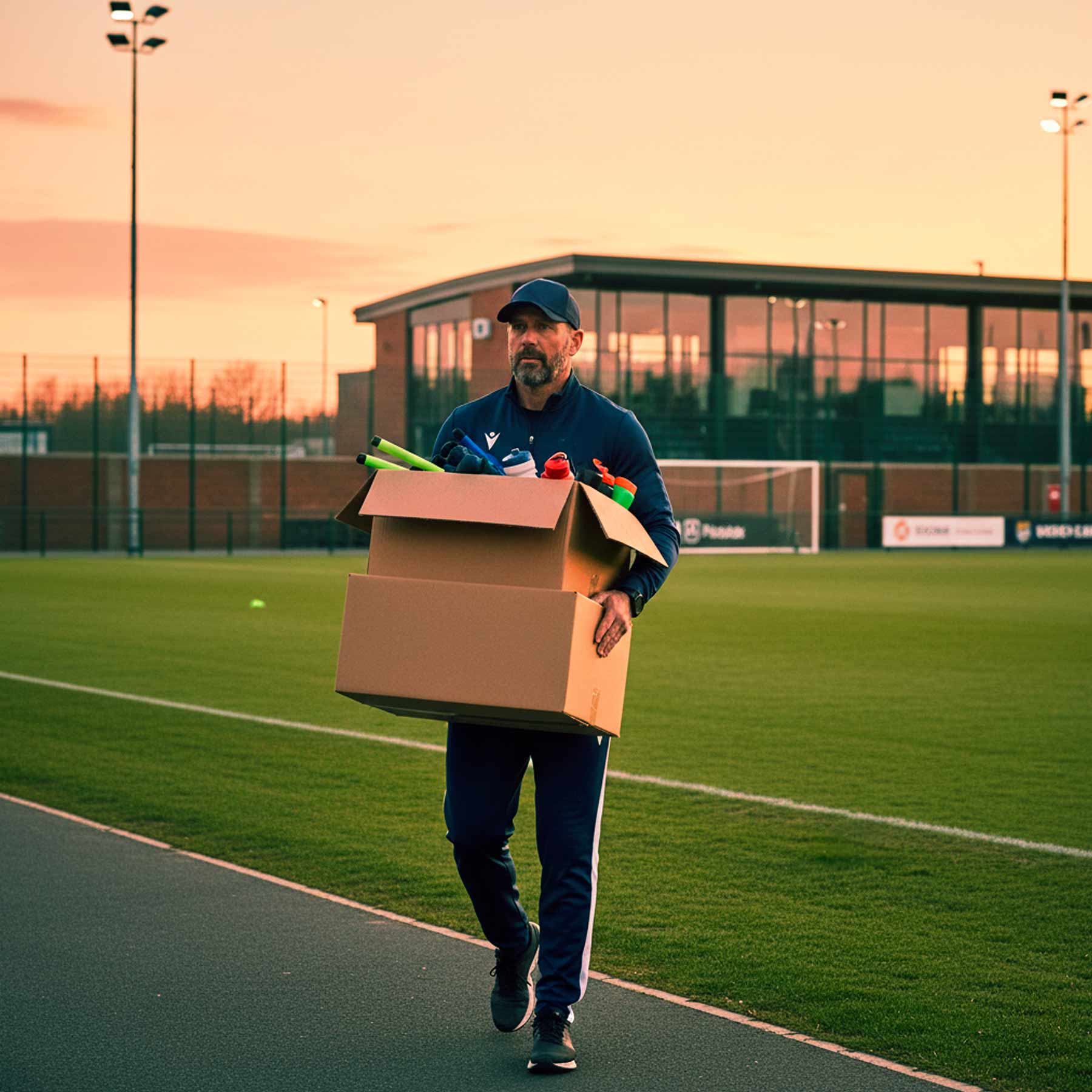Part Two: Implementation of the Injury Reduction Framework
Injuries have a negative effect on the probability of success in any sport, therefore it is imperative that performance practitioners devote significant attention to ensuring that their athletes stay as healthy and as injury free as possible.
To achieve this, coaches should adopt a multi-faceted and integrated approach. Injuries can be influenced by several different factors, including the magnitude of the loads that the athlete is being exposed to, the quality of their strength & conditioning programs, the implementation of appropriate recovery strategies, the quality of the athlete’s nutrition, and the lifestyle choices that they make. Everybody who plays an active role in the preparation and development of an athlete has a responsibility to reduce injuries: the medical professionals, the sports science department, the coaching staff, and, crucially, the athlete themselves.
In Part 1 of this series, we discussed a systematic five stage injury reduction process designed to create an individualised, bespoke program which can be integrated into the athletes normal training schedule. Here in Part 2, we describe how the injury reduction framework might be implemented in a specific sport – namely, men’s soccer. We will begin with a broad overview of the injury landscape specific to that sport.
Injuries in Men’s Soccer: An Overview
- A squad of 25 players will sustain on average50 injuries per season – equivalent to 2 per player per year
- Approximately 30% are muscle injuries –average 15 per season
- 12% of all injuries (16% of muscle injuries) are re-injuries
- Injury incidence is higher in matches than in training
- Injury risk increases towards the end of each half of a match
Source: UEFA Elite Club Injury Study
As we can see from this injury survey conducted by UEFA, the incidence of injury in soccer is extremely high. On average, every player in a 25-man squad will sustain two time-loss injuries every season, corresponding to approximately 12-14% of the playing squad being unavailable for selection at any one time. This has obvious and potentially significant consequences on overall team performance and on the likelihood of competitive success. Fifteen of these annual injuries, the equivalent of 30% per season, are muscle injuries. This figure is significant – muscle injuries are more likely to be modifiable, meaning that practitioners should prioritise their reduction strategies towards these injuries.
The study indicates that 12% of all football injuries are re-injuries. This is a matter of concern, because re-injuries have been shown to cause significantly longer player absences than index injuries. Two important questions are raised by this finding – firstly, are re-injuries being contributed to by ineffective injury management, inadequate rehabilitation or poor-quality return to play protocols for these injured players? Or, secondly, has the original injury caused a maladaptation or a change in function which will affect the long-term health of the player, meaning that they will have to be managed in a different way in their future training programs? What is certainly highlighted is the importance of reducing the risk of the player sustaining the initial injury in the first place.
The report also reveals that the incidence of injury is higher in competitive matches than it is in training, which again raises two discussion points. Firstly, are soccer players being protected from training related muscle injuries by conservative management of their training load, leading to under-training, and therefore a failure to develop the physical capacity needed to protect against injury in matches? Or, secondly, is this finding a result of players playing too many matches in a shortened period, and therefore sustaining injury through under-recovery and accumulated fatigue? These are factors which practitioners should consider carefully when designing their injury reduction programs.
Finally, the study tells us that injuries are most likely to occur towards the end of each half of a game, when players are more likely to be tired. This would suggest that acute fatigue has some role to play in injury occurrence.
This overview provides us with an insight into both the context and the scale that player injury can have in soccer, and reinforces the importance of practitioners having effective injury reduction protocols in place. The first stage of creating those protocols is to add more clarity to the injury landscape, which is achieved by identifying those injuries which occur most frequently in soccer.
Injury Reduction Stage One: Identify Common Injuries in Men’s Soccer
Whilst serious ligament or bone injuries are devastating for the players affected, research indicates that in men’s soccer they are comparatively rare. This means that, although practitioners must take all appropriate measures to limit their occurrence, their impact on the overall injury landscape is relatively small. In comparison, muscle injuries occur much more frequently, are financially costly, and can be reduced through evidence-based programs, making them the logical focus for practitioners in professional soccer. Here we can see a breakdown of the most frequently occurring muscle injuries in men’s soccer:
- Hamstring Strain: approximately 37% of all muscle injuries in men’s soccer
- Adductor Strain: approximately 23% of all muscle injuries in men’s soccer
- Quadriceps Strain: approximately 19% of all muscle injuries in men’s soccer
- Calf Strain: approximately 13% of all muscle injuries in men’s soccer
A further common soccer injury which practitioners must take steps to reduce is the ankle sprain. Reports vary, but it is estimated that ankle sprains account for approximately 10-20% of all injuries in men’s soccer, with the average time loss being 1-2 weeks. In addition to this tendinopathy injuries, particularly to the Achilles or the patellar, although statistically less common, can also be modified through training. Practitioners generally approach these injuries on an individual player basis.
Finally, although the occurrence of ACL injuries in men’s soccer is relatively low (1-2% of all injuries), the time loss associated with them is high. For this reason, it is imperative that preventative measures are taken to reduce the risk of these injuries occurring.
This process of identifying the specific injuries that most regularly occur within men’s soccer provides coaches with the information they need both to target them and to minimize the likelihood of them happening – this makes the overall reduction process much more effective. As we have seen, the most common muscle injury in men’s soccer is the hamstring strain, making this a logical focus for practitioners. For this reason, we will use the hamstring injury as a model to describe the remaining stages of the injury reduction framework.
Hamstring Injuries in Men’s Soccer – An Overview
Here we have a breakdown of some of the key factors relating to hamstring injuries in men’s professional soccer:
- Squad average 5-6 hamstring strains per season
- 84% hamstring strains occur in the biceps femoris
- The most common injury site is muscle-tendon junction of the biceps femoris
- 11% hamstring strains occur in the semimembranosus
- 5% hamstring strains occur in the semitendonosus
- Majority of injuries towards the end of each half
- Risk of re-injury is high: >33% with 1 previous injury
Hamstring strains represent approximately 37% of muscle injuries in men’s soccer, a figure which equates to 24% of all injuries. A squad of 25 players will encounter, on average, 5-6 hamstring strains per season. The vast majority of these injuries, 84%, occur in the biceps femoris (BF), with the most common injury site being the musculotendon junction of this muscle. Having a knowledge and an understanding of the most common sites of muscle injury is fundamentally important if we are to limit these injuries occurring. In this case, to effectively reduce incidents of hamstring strains in football, it is clear that identifying the reasons why the BF fails so frequently should be prioritised.
Of the remaining 16% of hamstring strains, 11% occur in the semimembranosus and 5% in the semitendinosus (ST). Again, it seems that the majority of injuries occur towards the end of each half, suggesting that tolerance to fatigue plays a role in making the hamstring more susceptible to injury.
Finally, the risk of re-injury is high. A player with a history of one previous hamstring injury is 33% more likely to sustain an injury than a player with no history of hamstring injury. The risk increases even further with any subsequent hamstring injuries, a fact which reinforces the importance of practitioners taking appropriate steps to stop the initial injuries from occurring.
From this general overview, practitioners are now better equipped to proceed to the second stage of the injury reduction process, which is to establish the playing situations and the soccer-specific conditions under which these injuries usually occur – in other words, to identify the mechanisms of injury.
Injury Reduction Stage 2: Hamstring Strains in Men’s Soccer – Mechanisms of Injury
- Sprint Injuries occur during the terminal swing phase of high-speed running when the hamstrings are producing peak force & reaching peak strain – most common mechanism ofinjury
- Stretch Injuries occur during movements with combined hip flexion & knee extension – high time loss injury
Based on injury mechanisms, hamstring injuries can be divided into two distinct categories: sprint related injuries and stretch related injuries.
Sprint Injuries
Sprinting injuries are by far the most common mechanism of a hamstring injury in soccer, and occur either during the late swing phase or the early stance phase of the running cycle. During the late swing phase of the sprint, the hamstrings are simultaneously lengthening and absorbing energy, producing peak force and reaching peak strain. At this point, the forces generated during sprinting may exceed the level of tolerance that the musculotendon unit of the hamstring has to withstand them, therefore the hamstring will fail, and injury will occur.
Stretch Injuries
Stretch injuries occur in soccer when the hip is flexed and the knee extended, and usually happen as a result of the player attempting to perform a technical soccer movement, such as a sliding tackle or an interception, or when an external force is being applied, such as by an opponent when contesting for the ball. Although stretch injuries occur much less frequently than sprint injuries, they do result in a much longer player absence, and therefore measures must be taken to reduce them.
Having identified the primary mechanisms of hamstring injury in soccer, practitioners can now advance to the third phase of the injury reduction process, which is to identify the intrinsic and extrinsic risk factors which are associated with hamstring injury occurrence.
To Be Continued…
Reducing injuries is one of the main pre-requisitesfor sporting success. The causes of injuries are multifactorial; therefore, a multi-faceted, integrated approach should be adopted to minimize the incidence of injury as effectively as possible.
In the penultimate part of this series, we will discuss the next two stages in the injury reduction framework using hamstring injuries in men’s soccer as a model – namely identification of injury risk factors, identification of specific athlete injury risks and the application of injury reduction protocols – and we will discover why clubs that adopt Apollo can see significant reductions in time-loss injuries over the course of a season.
To learn more about using Apollo for injury prevention, email info@apollov2.com.
Written by Adrian Lamb, Apollo Sports Scientist
References
1. Bahr R & van Dyke N (2019) ‘Have We Changed OurApproach To Hamstring Injuries – A Risk Factor Review?’ Aspetar Sports Medical Journal, vol.8 (18), pp 18-25
2. Behan FP,Vermeulen R, Whiteley R, Timmins R (2019) ‘The Dose Response of NordicHamstring Exercises on Biceps Femoris Long Head Architecture and EccentricHamstring Strength’ Journal of Science and Medicine in Sport 22
3. Best TM & Tietze D (2013) ‘Risk Factors ForHamstring Injuries: A Current Review of the Literature’ Aspetar Sports Medical Journal, vol.2, pp 446-450
4. Buckthorpe M, Wright S, Bruce-Low S,et al (2019) ‘Recommendations for Hamstring Injury Prevention in EliteFootball: Translating Research into Practice, British Journal of SportsMedicine, vol 53, pp 449-456
https://bjsm.bmj.com/content/53/7/449
5. Danielsson A, Horvath A, Senorski C, Alentorn-Geli E,Garrett WE, Cugat R, Samuelsson K, Hamrin Senorski E (2020) ‘The Mechanism ofHamstring Injuries - A Systematic Review’ BMC Musculoskeletal Disorders, 21(1)pp 641
6. Eirale C, Ekstrand J (2019) ‘Hamstrings are Dangerousfor Sport and Sport is Dangerous for Hamstrings’ Aspetar Sports Medical Journal, vol.8 (18), pp 26-31
7. Ekstrand J (2019) ‘Lessons Learned from Two Decades of InjurySurveillance in Elite Football’ AspetarSports Medical Journal,vol.8 (18)
8. Ekstrand J, Hägglund M, Waldén M (2011) ‘Epidemiology of MuscleInjuries in Professional Football (Soccer)’ American Journal of Sports Medicine,39(6), pp 1226-32
https://pubmed.ncbi.nlm.nih.gov
9. Ekstrand, J et al (2021) ‘Injury Rates Decreased in Men's ProfessionalFootball: An 18-year Prospective Cohort Study of Almost 12 000 Injuries SustainedDuring 1.8 Million Hours of Play’ British Journal of Sports Medicine 55(19)
10. EkstrandJ, Bengtsson H, Waldén M, Davison M, Khan KM, Hägglund M (2023) ‘Hamstring Injury Rates Have IncreasedDuring Recent Seasons and Now Constitute 24% of All Injuries in Men’sProfessional Football: the UEFA Elite Club Injury Study from 2001/02 to2021/22’ British Journal of Sports Medicine, vol.57 (5)
11. Ekstrand J, Van Zoest W,Gauffin H (2023) ‘Changes in Head Staff Members in Male Elite-Level FootballTeams are Associated With Increased Hamstring Injury Burden For That Season:The UEFA Elite Club Injury Study’ British Medical Journal Open Sport &Exercise Medicine, 9(4)
12. Eliakim, E, Morgulev, E, Lidor, R, Meckel, Y (2020)‘Estimation of Injury Costs: Financial Damage of English Premier League Teams'Underachievement Due to Injuries’, BMJ Open Sport & Exercise Medicine,vol 6, no.1
13. Howdengroup.com (2024) ‘Howden’s 2023/24 Men’sEuropean Football Injury Index’
https://www.howdengroupholdings.com
14. Huygaerts S, Cos F, Cohen DD, Calleja-González J, GuitartM, Blazevich AJ, Alcaraz PE (2020) ‘Mechanisms of Hamstring Strain Injury:Interactions Between Fatigue, Muscle Activation and Function’, Sports(Basel), 8(5) pp 65
15. Kluczynski MA, Kelly WH, Lashomb WM, Bisson LJ (2019) ‘ASystematic Review of the Orthopaedic Literature Involving National FootballLeague Players’ Orthopaedic Journal of Sports Medicine, 7(8)
16. LaPlaca, D, Elliott, J (2021) ‘The RelationshipBetween Injury Rates and Winning in the National Football League’, InternationalJournal of Strength and Conditioning
17. Medeiros DM, Marchiori c & Boroni BM (2021)‘Effect of Nordic Hamstring Exercise Training on Knee Flexors EccentricStrength and Fascicle Length: A Systematic Review and Meta Analysis’, Journalof Sport Rehabilitation, 30 (3) pp482-491
https://journals.humankinetics.com
18. Opar DA, Williams MD, Timmins RG, Hickey J, Duhig SJ,Shield AJ (2015) ‘Eccentric Hamstring Strength and Hamstring Injury Risk inAustralian Footballers’, Medicine and Science in Sports and Exercise, 47(4)pp 857-865
19. Schuermans J, Van Tiggelen D, Danneels L, Witvrouw E(2014) ‘Biceps Femoris and Semitendinosus - Teammates or Competitors? NewInsights Into Hamstring Injury Mechanisms in Male Football Players: A MuscleFunctional MRI Study’ British Journal of Sports Medicine, 48(22) pp1599-1606




